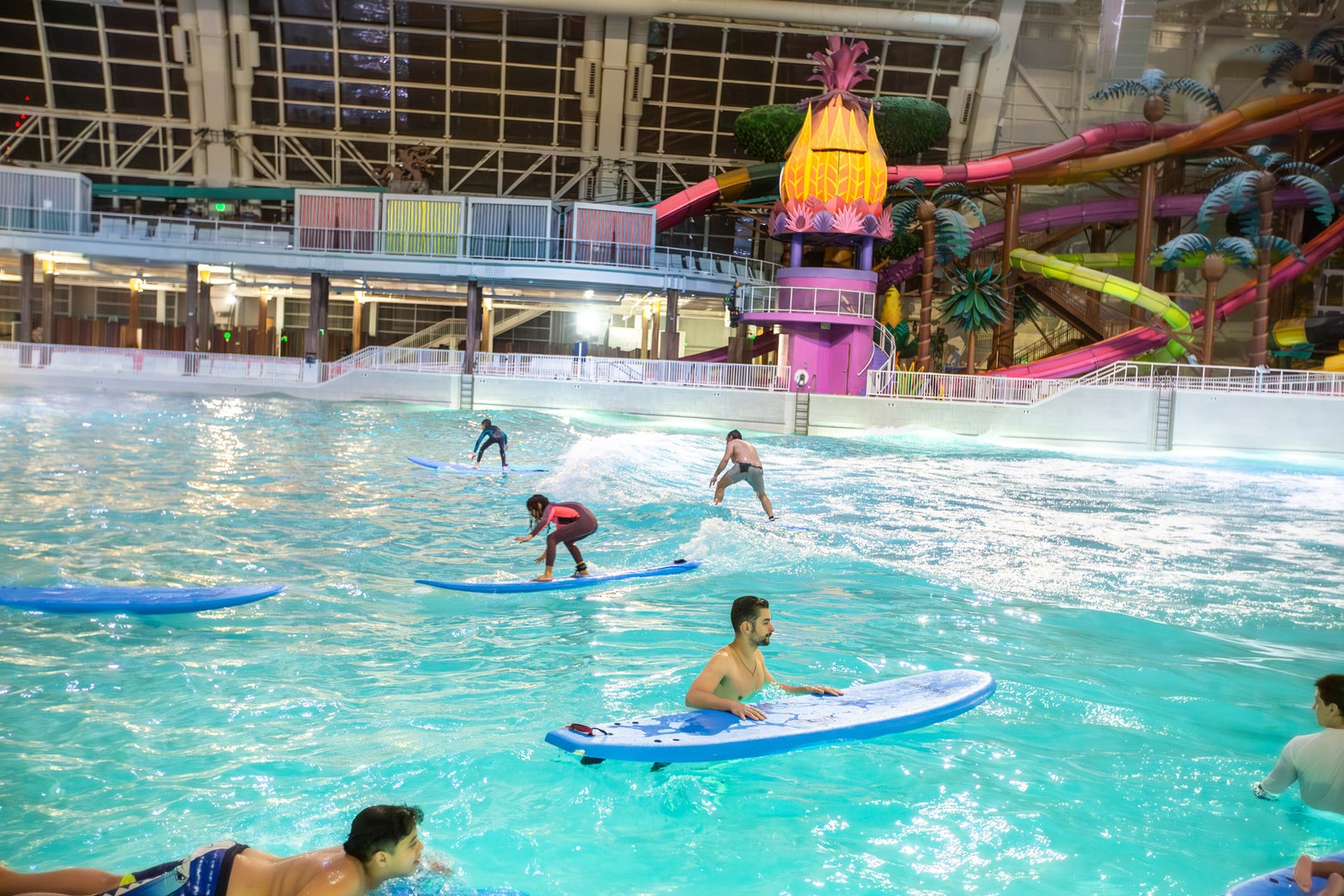It Used to Cost $50,000. Now Almost Anyone Can Try It Out. Unfortunately, I Loved It.

🌈 Abstract
The article explores the author's experience of surfing at the American Dream mall's indoor wave pool, and reflects on the changing nature of surfing as a sport and subculture in the face of commercialization and technological advancements.
🙋 Q&A
[01] Surfing at the American Dream Mall
1. What were the author's initial impressions of the indoor wave pool at the American Dream mall?
- The author was initially skeptical about the idea of surfing in a mall, but was surprised by how much it stirred in him.
- The author describes the artificial wave pool as being immune to the usual calculations and challenges of outdoor surfing, with a controlled environment and mechanically generated waves.
2. How did the experience of surfing at the American Dream pool differ from outdoor surfing?
- The waves were consistent and predictable, unlike the unpredictable and variable nature of ocean waves.
- The author found the experience to be somewhat boring, as there was little downtime and the repetitive nature of the waves lacked the challenge and transcendence of outdoor surfing.
- The author felt that the indoor surfing experience, while providing an opportunity to progress quickly, lacked the essence of what makes surfing unique as a sport.
3. How did the social dynamics at the American Dream pool differ from a typical outdoor surf lineup?
- There were no clear "locals" or "groms" (young surfers) establishing hierarchy and regulating the lineup, as everyone had paid the same fee to access the pool.
- An employee named Lani was responsible for calling surfers into the waves, rather than the surfers self-governing the lineup.
[02] The Changing Nature of Surfing
1. How has the rise of artificial wave pools and commercialization impacted the sport of surfing?
- The invention of the Slater wave pool, owned by legendary surfer Kelly Slater, marked a significant shift in surfing, moving it away from the "ceaseless search for the fleeting sublime" and towards a more privatized and commercialized model.
- The consolidation of major surf brands under private equity firms has led to the professionalization and optimization of surfing, reducing the sport's countercultural ethos.
- Technological giants like Google and Meta have become de facto employers in the surfing industry, further integrating the sport into mainstream culture.
2. How have these changes affected the youth culture and subcultures associated with surfing?
- The article suggests that the increasing privatization and commodification of surfing has led to a decline in the traditional "beach bum" lifestyle and the loss of affordable access to beaches and surf spots.
- The author notes concerns about the mental health and social well-being of today's youth, who are increasingly spending time indoors and online rather than engaging in traditional leisure activities like surfing.
- The author questions whether the wave pools and other artificial surf experiences can truly replace the authentic, time-consuming, and often frustrating process of outdoor surfing that was once central to the sport's subculture.
[03] The Broader Implications of the American Dream Mall
1. How does the American Dream mall represent broader trends in the retail and entertainment industries?
- The American Dream mall is described as a massive, experience-focused development that represents a radical campaign to save traditional retail in the face of the rise of e-commerce.
- The mall's extensive array of attractions, including record-setting roller coasters, an indoor ski slope, and the largest indoor water park, exemplifies the trend of malls shifting towards experiential offerings.
- However, the mall has faced numerous challenges, including lawsuits, financial losses, and the impact of the COVID-19 pandemic, reflecting the broader struggles of the retail sector.
2. How does the indoor surfing experience at the American Dream mall relate to the broader changes in youth culture and subcultures?
- The author suggests that the indoor surfing experience, while providing a controlled and accessible environment, may represent a shift towards the professionalization and optimization of leisure activities, rather than the more organic and time-consuming nature of traditional outdoor surfing.
- The author questions whether the indoor surfing experience can truly replace the authentic, transcendent, and community-building aspects of outdoor surfing that were once central to the sport's subculture.